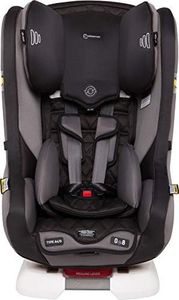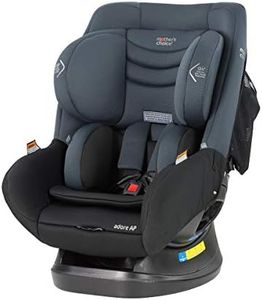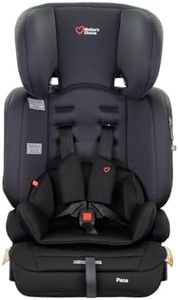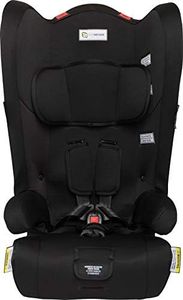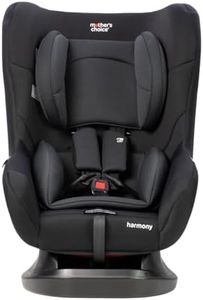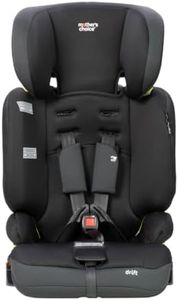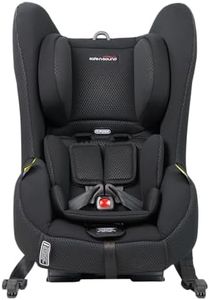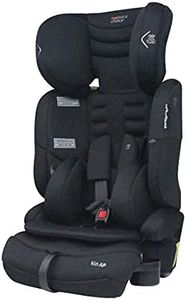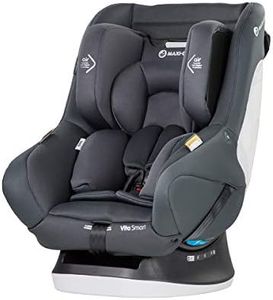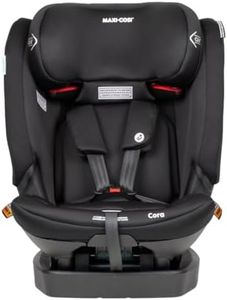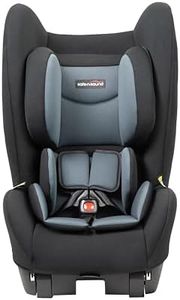We Use CookiesWe use cookies to enhance the security, performance,
functionality and for analytical and promotional activities. By continuing to browse this site you
are agreeing to our privacy policy
10 Best Convertible Car Seats
From leading brands and best sellers available on the web.Buying Guide for the Best Convertible Car Seats
When choosing a convertible car seat, it’s important to remember that this seat will often stay with your child from infancy through toddlerhood and even into early childhood. They’re designed to 'convert' from rear-facing to forward-facing as your child grows, providing extended use and value. To find the best fit, consider your child’s age, weight, height, your vehicle’s size, and how you’ll be using the seat—such as whether you’ll move it regularly between cars or need something suitable for air travel. Safety, comfort, and ease of use should always be your priorities.Rear-Facing and Forward-Facing LimitsThis spec tells you the minimum and maximum weight and height for using the seat in rear-facing or forward-facing modes. Rear-facing is the safest position for young children, so look for seats that allow your child to stay rear-facing as long as possible. Generally, rear-facing can range from 5 to 40 or even 50 pounds, and forward-facing from about 20 to 65 pounds. To choose wisely, consider your child's growth curve and aim for a seat that supports extended rear-facing. If your child is on the taller or heavier side, make sure the seat’s limits will accommodate them for longer periods.
Size and Fit in Your CarConvertible car seats come in different sizes, and some can be quite bulky. This spec is about the physical dimensions of the seat and how it fits in your vehicle. Slimmer seats are great for smaller cars or when you need to fit multiple seats across a row, while larger ones may offer more comfort or extra features. Measuring both your car’s back seat and comparing it to the seat’s dimensions, as well as checking if it interferes with the driver or passenger seat, can help ensure a good fit for your family’s needs.
Ease of InstallationHow easy the seat is to install—using either your car’s seat belt or the LATCH system—makes a big difference in everyday use and safety. Some seats have clear labeling, level indicators, and push-button LATCH connectors making setup simpler, while others require more manual effort. If you plan to move it between cars or feel unsure about installation, look for user-friendly designs or consider if local resources (like car seat checks) are available to help.
Adjustability and Comfort FeaturesAdjustability includes features like multiple recline positions, harness height and headrest adjustments, and padding options. More adjustable seats can offer greater comfort as your child grows and may make it easier to get a proper fit. You’ll want a harness that’s easy to tighten/loosen and a headrest that moves up smoothly. Prioritize adjustable features if your child has specific needs (like long legs or frequent naps), or if you want a seat that adapts well over the years.
Safety FeaturesThis isn’t about basic safety (all seats meet minimum standards), but about added protections like side-impact protection, energy-absorbing foam, or steel-reinforced frames. These enhancements can offer extra peace of mind but don’t replace correct installation and use. If you drive often on highways or value the highest safety options, these features might be more important to you; otherwise, focus on what you’ll use and install correctly.
CleanabilityKids can be messy, so consider how easy it is to remove and wash the car seat cover and pads. Some seats have machine-washable, quick-release covers, while others are trickier to clean. If you expect spills, frequent travel, or your child has allergies, opt for a seat that makes cleaning simple. On the other hand, if mess isn’t a big worry for you, you may not need the most advanced cleaning features.

